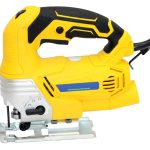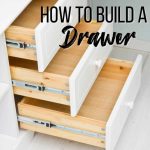Ultimate Guide To Stunning Woodworking Projects: Corner Cabinet Masterpieces For Your Home
Woodworking Projects Corner Cabinet: Beautifully Crafted and Functional Piece for Your Space
Woodworking projects have become increasingly popular in recent years, allowing individuals to showcase their creativity and craftsmanship. One particular project that stands out is the corner cabinet. This unique furniture piece not only adds charm and elegance to any room but also maximizes the use of corner spaces that are often overlooked. In this article, we will dive into the world of woodworking projects corner cabinets, exploring their features, benefits, and everything else you need to know before embarking on your own woodworking journey.
What is a Corner Cabinet?
A corner cabinet is a specially designed piece of furniture that fits seamlessly into the corners of a room. Its main purpose is to utilize the often underutilized space in corners, providing additional storage and display options. These cabinets can be custom-built or purchased as ready-made units, depending on your woodworking skills and preferences.
3 Picture Gallery: Ultimate Guide To Stunning Woodworking Projects: Corner Cabinet Masterpieces For Your Home



Who Can Benefit from Corner Cabinets?
Corner cabinets are a versatile addition to any home or office. They can be used in various settings, catering to different needs. Homeowners can benefit from corner cabinets in their living rooms, bedrooms, kitchens, or even bathrooms. They provide storage for books, decorative items, or kitchen essentials, while also adding a touch of elegance to the overall decor.

Image Source: remodelaholic.com
Office spaces can also benefit from corner cabinets. They can serve as storage for files, office supplies, or even a display unit for awards and achievements. Corner cabinets help optimize the available space, making it easier to keep your workspace organized and clutter-free.
When and Where to Use Corner Cabinets?
Corner cabinets are incredibly versatile and can be used in various rooms and spaces. In living rooms, they can be used to display collectibles, family photos, or a small entertainment system. In bedrooms, a corner cabinet can serve as a storage unit for clothes, shoes, or even as a mini vanity. Kitchens can benefit from corner cabinets by providing additional storage space for cookware, dishes, or pantry items.
When it comes to the location within a room, corner cabinets are ideally placed in the corner, away from high traffic areas. This allows for easy access to the cabinet’s contents while ensuring it doesn’t obstruct the flow of the room.
Why Choose a Corner Cabinet?

Image Source: pinimg.com
There are several compelling reasons to choose a corner cabinet for your woodworking project. Firstly, they make excellent use of corner spaces that would otherwise go unused or become wasted spaces. By incorporating a corner cabinet, you can maximize your storage options while maintaining a visually appealing and organized space.
Secondly, corner cabinets add a unique aesthetic to any room. Their placement in corners creates a visually appealing focal point and adds depth and dimension to the overall design. Depending on your chosen style and finish, a corner cabinet can enhance the elegance and charm of your space.
How to Build a Corner Cabinet?
Building a corner cabinet requires careful planning and woodworking skills. Here are some key steps to consider when embarking on your woodworking project:
1. Planning and Design

Image Source: popularwoodworking.com
Begin by measuring the corner space where the cabinet will be placed. Determine the dimensions and style of the cabinet, keeping in mind your specific storage needs and room decor. Sketch out a design that includes the cabinet’s overall structure, shelves, doors, and any other additional features.
2. Material Selection
Choose the type of wood that best suits your project. Common options include oak, pine, maple, or cherry. Consider the durability, appearance, and cost of the wood before making your final selection.
3. Cutting and Assembly
Using appropriate woodworking tools, cut the wood according to your design specifications. Assemble the cabinet by joining the pieces together using screws, nails, or wood glue. Take care to ensure the cabinet is sturdy and secure.
4. Finishing Touches
Apply the desired finish to your corner cabinet, such as paint, stain, or varnish. This step adds both protection and aesthetic appeal to the final product. Allow sufficient drying time before installing the cabinet in its designated corner.
FAQs about Corner Cabinets
Q: What are the standard sizes for corner cabinets?
A: Corner cabinets come in various sizes to accommodate different spaces and storage needs. The most common dimensions range from 24 to 36 inches in width and height, with depths of 12 to 18 inches.
Q: Can I customize the design of my corner cabinet?
A: Absolutely! Customization is one of the advantages of woodworking projects. You can tailor the design, dimensions, and finishes of your corner cabinet to match your personal style and the existing decor of your space.
Q: Are corner cabinets difficult to install?
A: The ease of installation will depend on the complexity of your chosen design and your level of woodworking experience. Simple ready-made corner cabinets typically come with detailed instructions for easy installation, while custom-built cabinets may require more advanced skills.
Q: What are the benefits of ready-made corner cabinets?
A: Ready-made corner cabinets offer convenience and time-saving benefits. They come pre-designed and pre-cut, eliminating the need for detailed planning and precise measurements. Additionally, they often come with easy-to-follow assembly instructions, making them a suitable choice for beginners or those with limited woodworking skills.
Pros and Cons of Corner Cabinets
Pros:
Maximizes corner spaces and provides additional storage
Enhances the overall aesthetics of the room
Customizable to match personal style and decor
Creates a visually appealing focal point
Cons:
Requires woodworking skills and tools
Custom-built cabinets can be time-consuming
May not be suitable for all room layouts
Conclusion: A Beautiful and Functional Addition to Your Space
Woodworking projects corner cabinets bring both beauty and functionality to any room. By utilizing the often-neglected corner spaces, these cabinets provide additional storage while adding a touch of elegance to the overall decor. Whether you choose to build a custom cabinet or opt for a ready-made unit, the corner cabinet is sure to become a standout piece in your space. So, roll up your sleeves, embrace your creativity, and get ready to craft a woodworking project that will leave a lasting impression!
This post topic: Crafts

